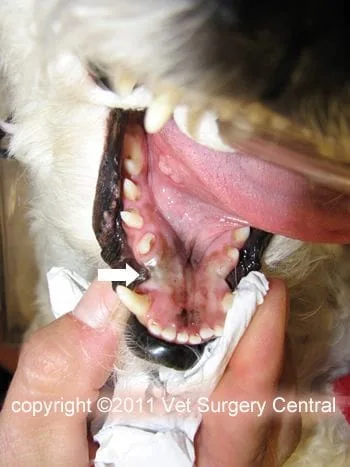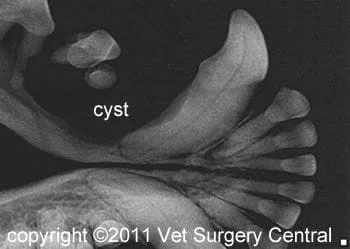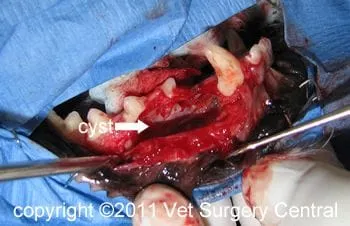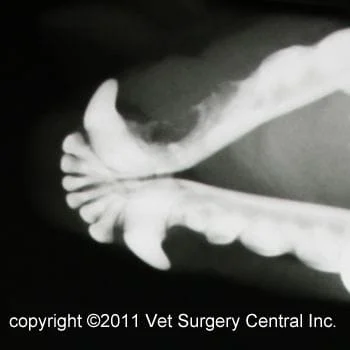Key Points
Dentiguous cysts are due to unerupted teeth. Early treatment offers an excellent prognosis with a simple treatment. Advanced disease should be treated aggressively for a good outcome
What is a dentiguous cyst?
This is a cyst or a cavity that is filled with fluid and is surrounding the crown of a tooth that is beneath the gum line (unerupted tooth). In the early development of a tooth, there is a multi layered sac of tissue that is surrounded by the dental pulp. The sac which is the enamel organ covers the pulp like a sock on your foot. Once the enamel has formed on the tooth, the enamel organ becomes inactive. When the tooth erupts through the gum line, the majority of the outer epithelium breaks away from the tooth, thus it is no longer a closed sac, but just a collar of tissue along the neck of the tooth.
If a tooth does not erupt, a number of things can happen: nothing, resorption of the tooth, or formation of a cyst. A cyst will form if the cells from the enamel organ that secrete fluid. As the cells secrete fluid, the pressure from the fluid will cause the surrounding bone to dissolve. If this condition is left undiagnosed, the cyst will enlarge and destroy large sections of the upper or lower jaw bone.
Clinical signs

Diagnosis
The diagnosis of a dentiguous cyst is made with x-rays, which shows destruction of the bone.
Treatment
Early treatment of dentiguous cysts has the best outcome with the least amount of surgery for the pet. When pets are young (such as 6 months of age) the number of teeth in the mouth should be counted. If there are any less than normal, the entire jaw should be x-rayed to find any unerupted teeth, as these are the ones that are prone to developing dentiguous cysts. The associated unerupted tooth is removed and the lining of the cyst is removed. If cysts are large (as see above in the x-ray), then affected teeth and cyst lining are removed and the cavity in the jaw is filled with bone graft.

Prognosis
The earlier the treatment, the better the chance for curative surgery. When left untreated for many years, the risk is much greater for delayed healing or recurrence of the cystic structure.
Comparative radiographs of a dentiguous cyst presurgery and 6 months post bone grafting. The jaw bone now is strong and the canine tooth is firmly attached to the bone.


rev 9/13/11


